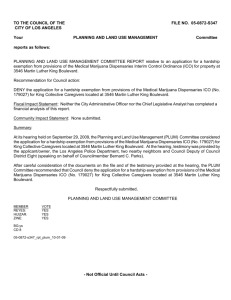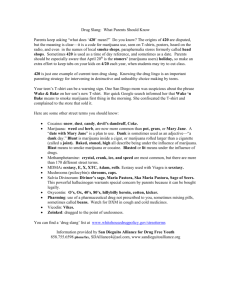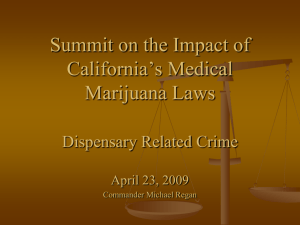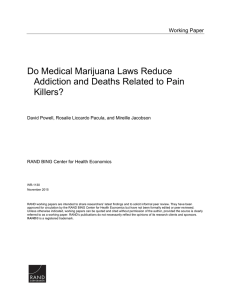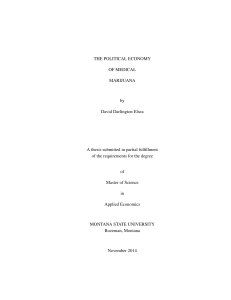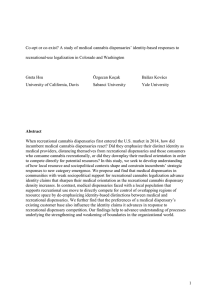File
advertisement
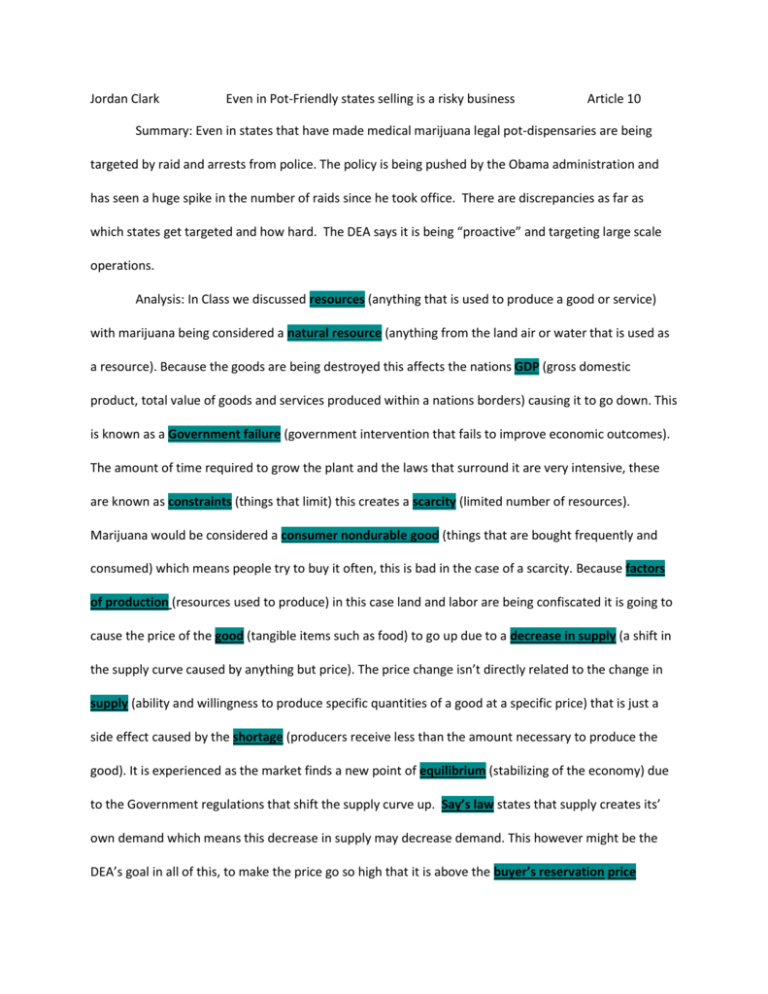
Jordan Clark Even in Pot-Friendly states selling is a risky business Article 10 Summary: Even in states that have made medical marijuana legal pot-dispensaries are being targeted by raid and arrests from police. The policy is being pushed by the Obama administration and has seen a huge spike in the number of raids since he took office. There are discrepancies as far as which states get targeted and how hard. The DEA says it is being “proactive” and targeting large scale operations. Analysis: In Class we discussed resources (anything that is used to produce a good or service) with marijuana being considered a natural resource (anything from the land air or water that is used as a resource). Because the goods are being destroyed this affects the nations GDP (gross domestic product, total value of goods and services produced within a nations borders) causing it to go down. This is known as a Government failure (government intervention that fails to improve economic outcomes). The amount of time required to grow the plant and the laws that surround it are very intensive, these are known as constraints (things that limit) this creates a scarcity (limited number of resources). Marijuana would be considered a consumer nondurable good (things that are bought frequently and consumed) which means people try to buy it often, this is bad in the case of a scarcity. Because factors of production (resources used to produce) in this case land and labor are being confiscated it is going to cause the price of the good (tangible items such as food) to go up due to a decrease in supply (a shift in the supply curve caused by anything but price). The price change isn’t directly related to the change in supply (ability and willingness to produce specific quantities of a good at a specific price) that is just a side effect caused by the shortage (producers receive less than the amount necessary to produce the good). It is experienced as the market finds a new point of equilibrium (stabilizing of the economy) due to the Government regulations that shift the supply curve up. Say’s law states that supply creates its’ own demand which means this decrease in supply may decrease demand. This however might be the DEA’s goal in all of this, to make the price go so high that it is above the buyer’s reservation price (largest dollar amount the buyer is willing to pay for a good). However utility theory (the more pleasure a product gives the more consumers are willing to pay for it) states that this will take a while due to the high utility (amount of pleasure or satisfaction the good gives you). Asking the question of whether or not the good is elastic (sensitive to change in price) enough to justify the amount of Government spending (money the government spends to fix the economy) that has gone into the project. Elasticity however, is based on availability of substitutes (other places the consumer can go to get the good) which in this case is the (illegal) black market where the price is much higher. It is also based on Luxuries vs. Necessities (how critical is it to everyday life) which in this case where it is for medical use would be considered a necessity. So from an economic stand point the Government is wasting their time in this endeavor and costing the states needed tax money. Marijuana is a very unique market (any arrangement through which buyers and sellers exchange anything of value) because most of its goods are sold on the black market. These raids that shut down dispensaries increase the transaction costs (cost of making the transaction for both buyer and seller) because of the time and effort required to meet a black market dealer, and good luck getting reliable quality information about the product. Because the market would fall under monopolistic competition (many firms supplying the product but with some brand loyalty) the dispensaries are price setters (can raise or lower price without losing all sale) but the market will get disrupted if any dispensaries become too large, because the article says the larger dispensaries are better targets. The disruption comes because firms striving for profit maximization (maximize the difference between revenue and costs) are required to take a heightened risk. Because marijuana is a private good (a good or service whose consumption by one person excludes the consumption of others) consumers often do not consider how their consumption of the good affects the well being of others. The raids may be the cause of complaints by people in the apartments upstairs from a medicinal marijuana user that are experiencing side effects, this is known as an externality (cost of a market activity bore by a third party). This could be another source of why that market is not in perfect condition. On the reverse side of that the demand line is also shifted in because of the free rider dilemma (someone who reaps the benefits from someone else’s purchase) many people just find a friend that needs medical marijuana and reap benefits from his second hand smoke. This ultimately results in a market failure (supply and demand have not led to the best point on the production possibilities curve).These factors may be the reason the Government views social costs (full costs of an economic activity) as too high and chose to do something. Because the raids shut down whole dispensaries it is increasing the number of Unemployed (without a job the preceding week and actively looking for one) because of the Government’s Policy Goal (want the lowest level of unemployment without setting off inflation) this in turn actually provides incentive for the government to make arrests during these raids because people who are under 16 or institutionalized are not counted in the labor force (all the employed and unemployed people over 16). This type of unemployment is known as structural unemployment (mismatch between skills of labor force participants and skills needed by employers) decisions like this are what could be the cause of the Recession (period of slow economic growth) America is in. The raids are affecting the output growth and unemployment which is affecting America’s Macroeconomics (study of the economy as a whole). This is an example of Keynesian policy (believe government intervention is necessary to stabilize the economy) where the government is using fiscal policy (government taxes or spending used to alter economic outcomes) to try and decrease demand for the product. Even little changes in one market have a big effect on our countries economics (science of making decisions in the presence of scarce resources) due to the multiplier effect (Each dollar is re-spent multiple times and has a multiplied impact on the aggregate economy). Something like raiding a pot dispensary that seems small can often have a large impact on the entire economy.

![[H1]Researching Society with MicroCase Online](http://s3.studylib.net/store/data/007737973_2-9d35b9e42208c660471ccaa373bd3b78-300x300.png)




